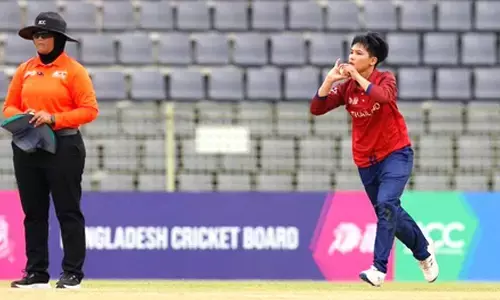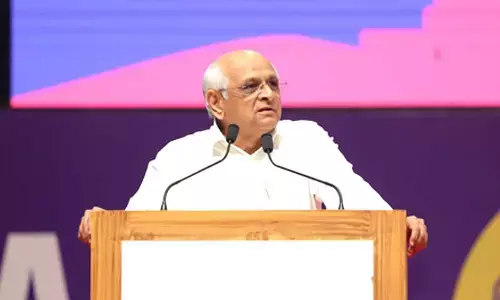Seat-sharing solved, now transfer of votes between Cong & Left Front raise concerns
Share :

As it is now certain that Left Front and Congress will be contesting for the forthcoming Lok Sabha polls in West Bengal with a more-or-less amicable seat-sharing arrangement, an area of concern continued to haunt the partners.
Kolkata: As it is now certain that Left Front and Congress will be contesting for the forthcoming Lok Sabha polls in West Bengal with a more-or-less amicable seat-sharing arrangement, an area of concern continued to haunt the partners.
The concern is how smooth the mutual transfer of votes between the two can happen.
Even if the CPI(M) can convince its dyed-in-wool vote bank to back the Congress candidates, will the country’s oldest national party be able to reciprocate by motivating its dedicated voters to press the EVM button in favour of the Left Front candidates?
Veteran political observers feel that CPI(M) or Left Front, being a regimented force, can always mobilize the traditional voters behind a Congress candidate as part of an alliance formula. The records say that while a Congress-Left Front seat agreement proved to be a positive factor for Congress in increasing its seat tally in West Bengal, the same arrangement reaped negative dividends for the Leftist forces.
The finest example on this count was the 2016 West Bengal Assembly elections, when for the first time Congress and Left Front went to the polls with an amicable seat-sharing agreement.
In the 2016 Assembly polls, despite contesting from a lesser number of seats, Congress was able to improve its seat tally to 42 from 40 in 2011 and also increase its vote share by 3.16 percentage points. In 2016, Congress also emerged as the second largest and the principal opposition party in the state.
On the contrary, in 2016, the Left Front slipped to the third position bagging just 26 seats as compared to 40 in the 2011 Assembly polls. The Left Front’s vote share also dipped by 10.35 percentage points in 2016 from what it was in 2011 when it became the principal opposition party in the state.
From this statistical trend, the same thing was clear: While Left Front allies managed to successfully transfer their dedicated vote bank in favour of Congress wherever applicable, the country’s oldest national party was not able to reciprocate similarly.
The 2016 Assembly election statistics also reveal that both Trinamool Congress and BJP gained significantly because of this factor where the dedicated Congress voters were reluctant to consume Congress’ decision of having a seat-sharing arrangement with Left Front.
On one hand, Trinamool Congress increased its seat tally in 2016 to 211 from 184 in 2011 and also improved its vote share by 5.98 percentage points. On the other hand, in 2016 BJP increased its seat tally to three from zero in 2011 and also improved its vote share by 7.10 percentage points.
In 2019 Lok Sabha Polls, Congress and Left Front contested independently and that year there was a four-cornered contest in the state involving Trinamool Congress, BJP, Left Front and Congress.
In the 2021 West Bengal Assembly elections, again there was a mutual seat-sharing agreement between Congress and Left Front and at that time All India Secular Front (AISF) was a third partner in the alliance.
The result was that AISF was the only gainer after bagging just one seat, while both Congress and the Left Front were reduced to zero in terms of Assembly presence.
However, in 2021 also significant were the respective vote shares of Congress and Left Front, where the decline in Left Front’s vote share was much higher than that of Congress.
While the Left Front witnessed a negative swing of 15.02 percentage points, the same for Congress was lower at 9.22 percentage points.
This statistical trend again raised the same question even if the Left Front can convince their voters to back Congress wherever applicable, can the Congress display a reciprocation of the same?
The same question seems to be haunting the CPI(M) this time as well. The question also remains if the same trend continues this time as well, who will gain more out of it -- Congress or BJP?










